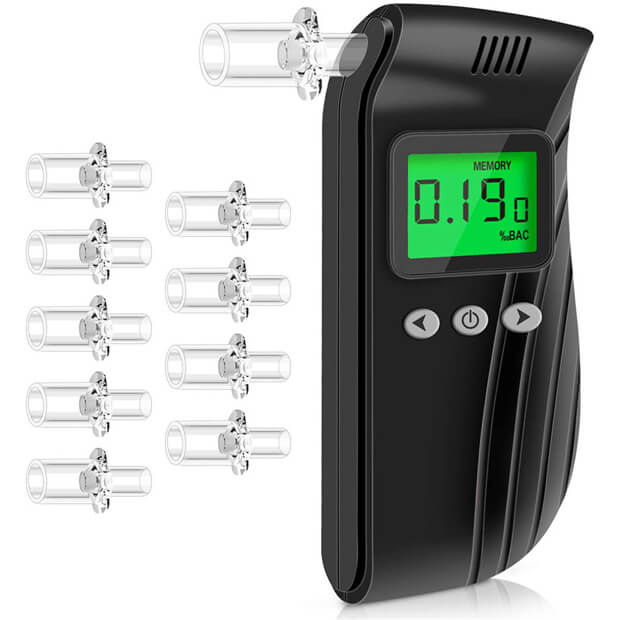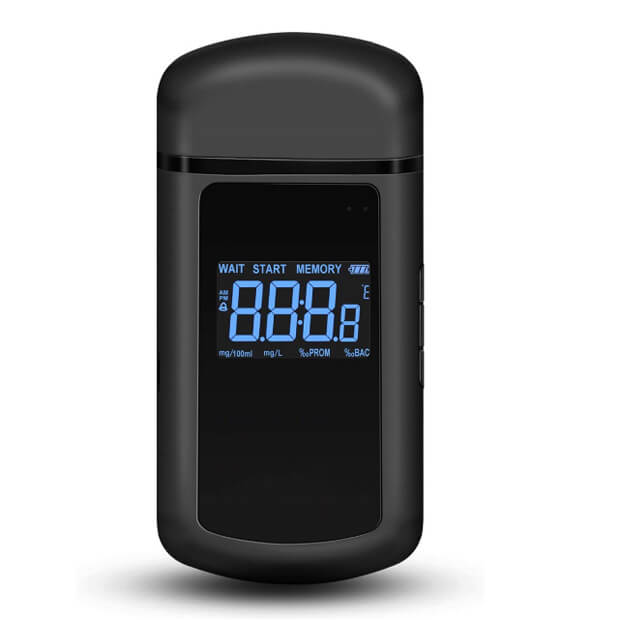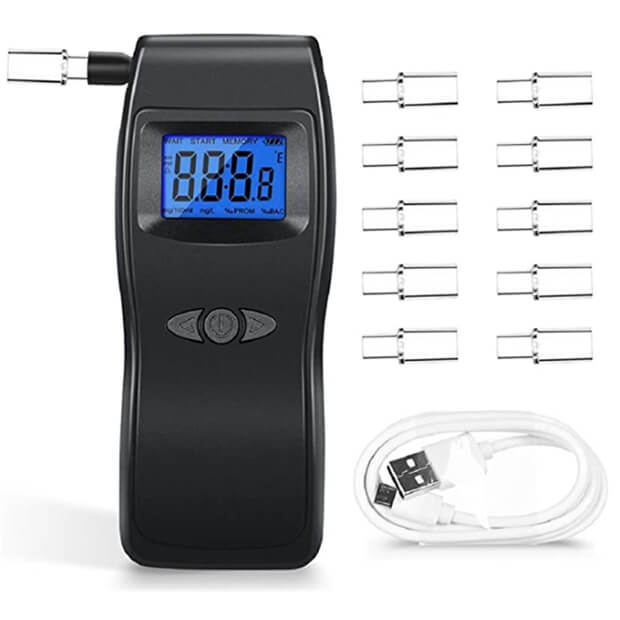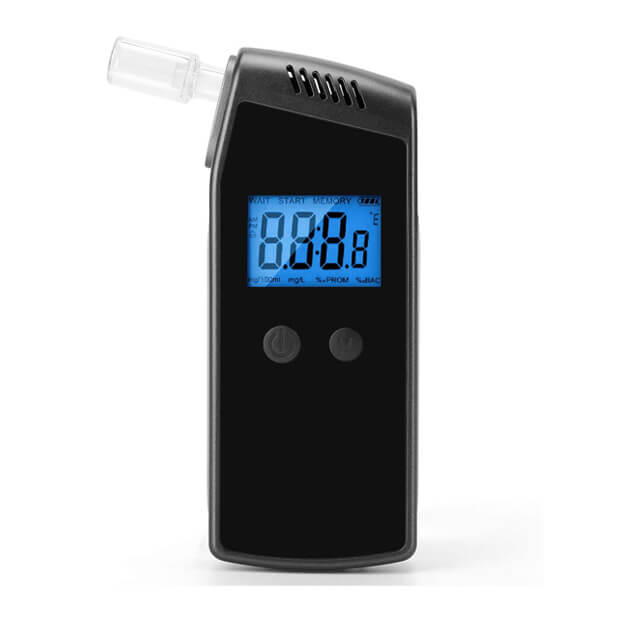Mems Alcohol Tester
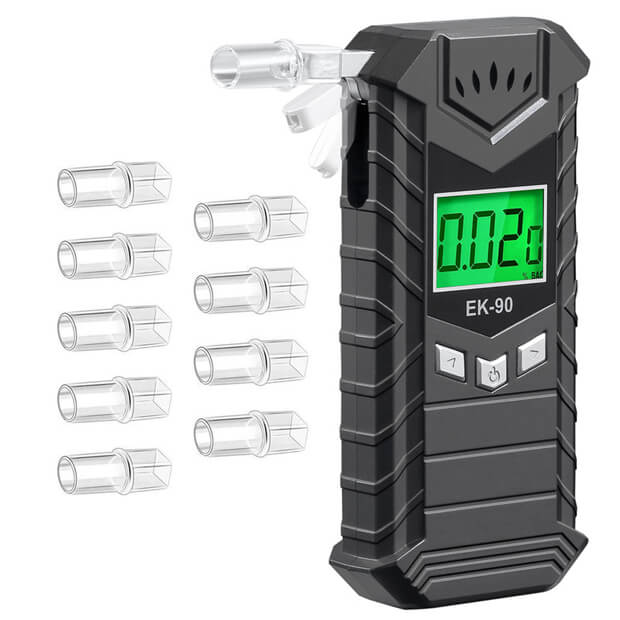
MEMS (Micro Electromechanical System) is the integration of microcircuits and micromachines on a chip according to functional requirements, usually in millimeters or microns in size. MEMS technology uses a range of existing technologies and materials in semiconductor technology.
With the rapid development of MEMS technology, gas sensors have also evolved towards miniaturization, intelligence, integration, and low power consumption. Microstructured gas sensors using MEMS technology, combining heating elements and sensitive elements. Optimizing the performance of the gas sensor and greatly improving the sensitivity, reliability, and consistency of the gas sensor.
*The consistency and accuracy of MEMS sensor better than semiconductors, and close to the fuel cell sensor.
*If accuracy is a requirement, but the budget is limited, MEMS will be more suitable for you.
ODM/OEM Service
Exterior Design
Staffed with in-house specialized designers, your style concepts will be turned into reality. Any molding demand can be fulfilled.

Logo and Label
Your own logo can be laser printed on the products. Also brandedlabel stickers are available.

Package
The color box, inner box,and outer cartons canbe customized according to your artwork. Anybranded packages are accessible.

Mems Alcohol Tester
Mems Alcohol Tester
What is a blood alcohol test?
The level of alcohol in your blood is measured by a blood alcohol test. The breathalyzer is a test that police officers frequently employ on people suspected of driving while alcohol consumption. While a breathalyzer provides quick findings and on-spot testing, it does not provide the same level of accuracy as testing alcohol in the blood.
The major element in alcoholic beverages such as beer, wine, and liquor is alcohol, often known as ethanol. Testing for this consumed alcohol can be done by many ways. When you drink an alcoholic beverage, it enters your bloodstream and is metabolized by your liver. One drink per hour is the maximum amount of time your liver can process. 12 ounces of beer, 5 ounces of wine, or 1.5 ounces of whiskey is considered one drink.
You may experience the effects of drunkenness, also known as intoxication, if you consume alcohol quicker than your liver can digest it. Behavioral changes and decreased judgement are two examples. Alcohol's effects vary from person to person, based on a range of characteristics such as age, weight, gender, and the amount of food consumed prior to drinking. On demand tests are used by authorities to test person for alcohol consumption.
What is it used for?
A blood alcohol test may be used to find out if you:
- Have been driving while inebriated. For drivers aged 21 and over in the United States, a blood alcohol content of.08 percent is the legal limit. When driving, drivers under the age of 21 are not permitted to have any alcohol in their system.
- Are legally inebriated. The legal alcohol limit for public consumption varies by state. • Have consumed alcohol while enrolled in a treatment program that forbids it.
- Have alcohol poisoning, a potentially fatal condition that occurs when your blood alcohol level rises to dangerously high levels. Basic physiological processes such as respiration, heart rate, and temperature can all be severely harmed by alcohol poisoning.
What happens during a breathalyzer test for alcohol?
A tiny needle will be used to obtain a blood sample from a vein in your arm by a health care provider. A small amount of blood will be collected into a test tube or vial once the needle is inserted. When the needle goes in or out, it may sting a little. It normally takes less than five minutes to complete this process.
Are there any risks to the test?
There is very little risk to having on demand tests such as blood test. You may have slight pain or bruising at the spot where the needle was put in, but most symptoms go away quickly. This type of testing is not feasible at all as it require blood sampling.
What do the results mean?
The results of a blood alcohol test can be presented in a variety of ways, including as a percentage of blood alcohol content (BAC). The following are some typical outcomes based on data collected:
- Sober: BAC of 0.0 percent
- Legally inebriated: BAC of.08 percent
- Impaired: BAC of.08–0.40 percent. You may have difficulties walking and speaking if your blood alcohol level is this high. Other signs and symptoms include fatigue, nausea, and disorientation.
- A BAC of more than.40% puts you at risk of significant consequences. You may be at danger of coma or death if your blood alcohol level is this high.
The accuracy of the results may be influenced by the timing of the test. Only 6–12 hours after your last drink is a blood alcohol test accurate. If you have any questions or additional information regarding your results, you should speak with your doctor and/or a lawyer.
Mems Technology
MEMS (Micro Electro-Mechanical System) is the integration of microcircuits and micromachines on a chip, usually in millimeters or microns, according to functional requirements. MEMS technology makes use of a variety of existing semiconductor technologies and materials. MEMS sensor are low cost sensors as compared to others.
Gas sensors have progressed towards downsizing, intelligence, integration, and low power consumption as MEMS technology has advanced. MEMS technology is used to create microstructure gas sensors that combine heating components and sensitive elements. Optimizing the gas sensor's performance and significantly increasing its sensitivity, reliability, and consistency.
MEMS Sensor
Electronic, mechanical, and wireless communication components are commonly placed on a single silicon chip or integrated circuit in microelectromechanical systems (MEMS). Electronic and mechanical components can be housed separately and coupled via a "single, multi-chip package" as an alternative. Through microfabrication, MEMS technology can be used to make a variety of electronic, mechanical, and electrical devices.
Traditional integrated circuit (IC) manufacturing only allows for the creation of electronic and electrical components, so this distinction is critical. Microsensors and micro actuators have risen to the forefront of MEMS development. Transducers are MEMS components that transfer one kind of energy to another. Pressure, temperature, acceleration, vibration, chemical species, radiation, inertial forces, magnetic fields, and other physical or environmental parameters can all be captured by the microsensors.
Microsensor development and use has advanced significantly over the last several decades, with common applications in a variety of industries, including automotive, pharmaceutical, environmental, and manufacturing, to mention a few. Accelerometers, gyroscopes, and navigation systems are common applications in the automobile and aeronautical industries.
Performance
The performance of alcohol tester breathalyzers using MEMS sensor is better than the semiconductor sensor and fuel cell sensors., it can help our results more stable and accurate, The act of operating or having control of a motor vehicle while under the influence of alcohol to the point where mental and motor skills are impaired is known as impaired driving. Every day, almost 30 people in the United States are killed in car accidents involving an inebriated driver. Additional information on this can be searched.
In other words, one person dies every 51 minutes. Alcohol-related crashes cost the economy more than $59 billion each year. In 2012, alcohol-impaired driving crashes claimed the lives of 10, 322 persons, accounting for nearly one-third (31%) of all traffic-related deaths in the United States. Car accidents claim the lives of 1.3 million people each year. The basic idea of detecting alcohol in the breath of a driver is that when the breath containing alcohol molecules reacts with the sensing element, physical phenomena such as resistance, capacitance, current flow, conductivity, and so on change.
This change can be measured and hence the detection of alcohol can be confirmed by testing. A new and unique technique for more efficient alcohol detection system is Water Cluster Detection (WCD) which detects expired gas based on the principle that water clusters in breath are easily separated into positively and negatively charged ions by using an electric field . Due to size of WCD sensor being huge, it limits the application in automobiles.
Advantages
- MEMS sensors have superior consistency and precision than semiconductors and are comparable to fuel cell sensors.
- Using sensor arrays and comparable signal processing, you can boost the selectivity of your gas detection. It implies that the outcomes will be more consistent in alcohol tester breathalyzers.
- MEMS allows for a decrease in power usage. Normally, semiconductors require roughly 120 mA of power, while the MEMS-based sensor only requires 15 mA. It means the battery can be utilized for a longer period of time as compared to fuel cell sensors..
- MEMS sensors can reduce sensor size dramatically, and they can also improve the performance of various pocket and handheld semiconductor breathalyzers.

